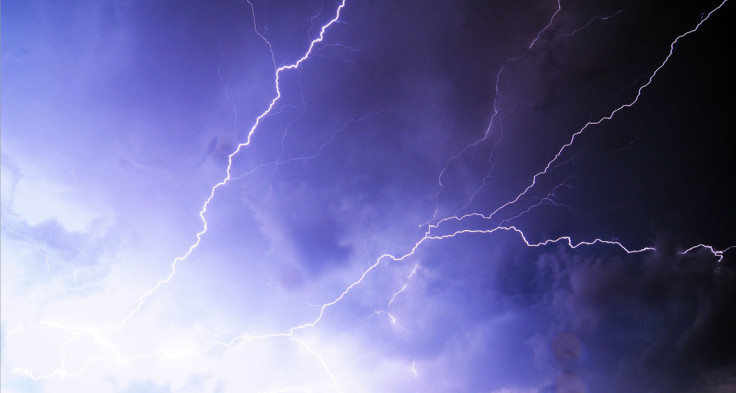Atmospheric rivers snake through the most dangerous and extreme storms
Coastal regions are most vulnerable to atmospheric rivers, and climate change could make them more dangerous.
Long, thin regions of moisture in the atmosphere that flow through storms, known as atmospheric rivers, have been linked to the most extreme winds and rainfall.
Between 1997 and 2014, about half of the top 2% most extreme storms in the world's coastal regions were associated with atmospheric rivers, according to a paper published in the journal Nature Geoscience. Overall, between 40 and 70% of extreme wind and rainfall or snowfall events across the world's coastlines were linked to atmospheric rivers.
Dangerous storms
These rivers are at an altitude of about 1 to 2.5km, about 300km wide and thousands of kilometres long. They form in the warm, moist sections of storms where they are thought to contribute to excess rainfall. They're measured using a combination of moisture sensors on microwave satellites, and computer simulations.
In areas such as western Canada, northern Europe, New Zealand and southern South America atmospheric rivers occur on up to 35 days a year. Atmospheric rivers are also very costly events for insurers. The study identified that in the top 19 most damaging and expensive storms in Europe between 1979 and 2003, 14 were linked to atmospheric river activity.
"Atmospheric rivers are associated with a doubling or more of the typical wind speed compared to all storm conditions, and a 50–100% increase in the wind and precipitation values for extreme events," the authors write in the paper.
"We conclude that landfalling atmospheric rivers can represent a significant hazard around the globe, because of their association with not only extreme precipitation, but also extreme winds."

More atmospheric rivers in a warming world
The mechanism by which atmospheric rivers lead to extreme rainfall or snowfall is relatively well understood.
"Atmospheric rivers produce the extreme rainfall because this moisture is lifted above mountain ranges. The lifting of the air initiates some rainfall, but this then feeds off this huge quantity of water in the atmospheric river to lead to much heavier rainfall," Richard Allan, a climate scientist at the University of Reading in the UK (who was not involved with the research) told IBTimes UK.
However, the link between extreme winds and atmospheric rivers is new, Allan said. Previous research suggests that sting jets (damaging winds near the tail of a cyclone) are the areas with the strongest winds. However, atmospheric rivers do not flow here, but are confined to the warmer parts of the storm.
The intensity of atmospheric rivers is also expected to increase as the climate warms, Allan said. "In a warmer world when these events they occur they become more intense," Allan said. This is because warmer air can hold more moisture, leading to bigger atmospheric rivers. "So this means even stronger moisture transport and heavier rainfall."

© Copyright IBTimes 2025. All rights reserved.






















